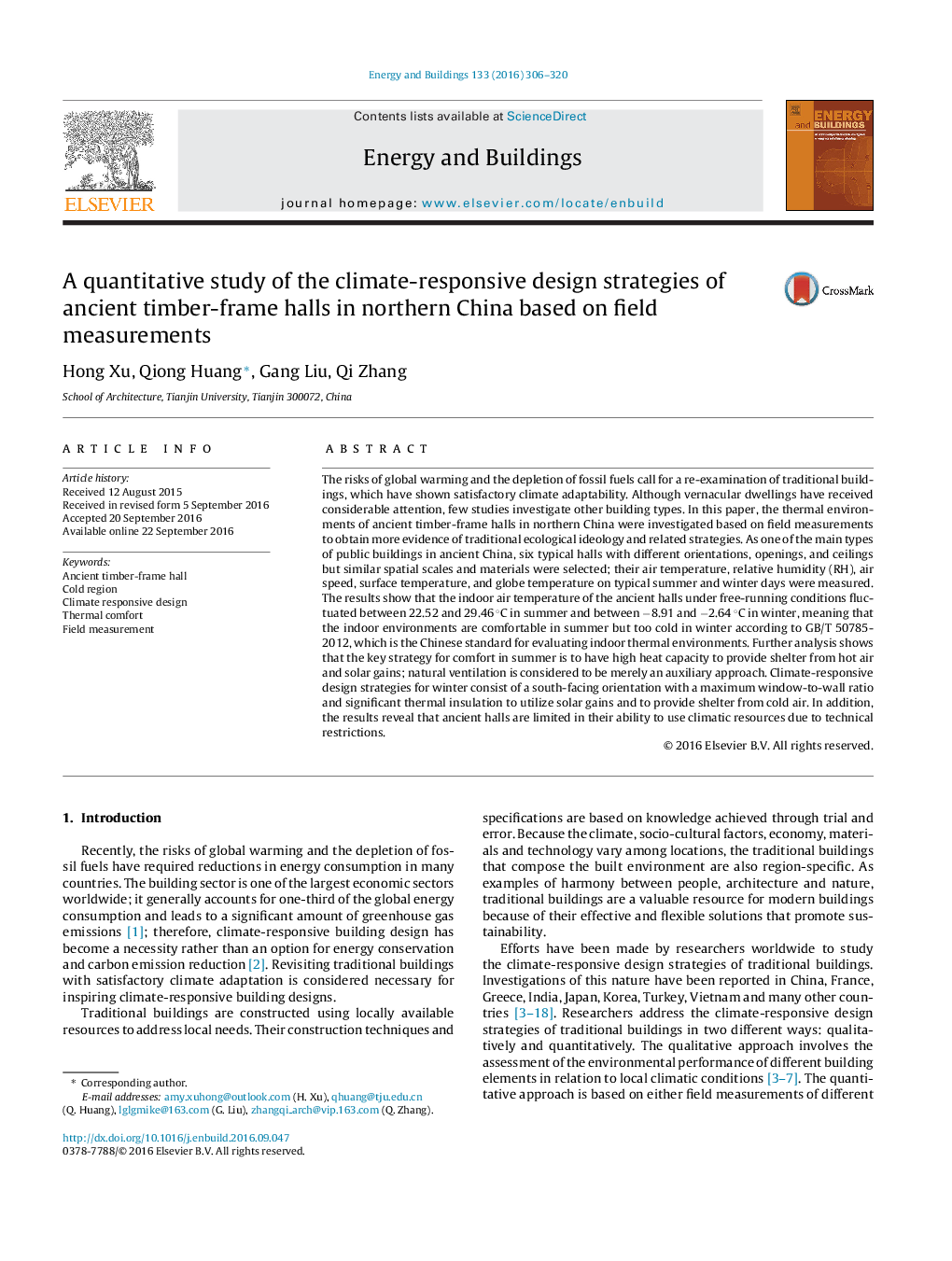| کد مقاله | کد نشریه | سال انتشار | مقاله انگلیسی | نسخه تمام متن |
|---|---|---|---|---|
| 4919515 | 1428957 | 2016 | 15 صفحه PDF | دانلود رایگان |
عنوان انگلیسی مقاله ISI
A quantitative study of the climate-responsive design strategies of ancient timber-frame halls in northern China based on field measurements
ترجمه فارسی عنوان
مطالعات کمی از استراتژی های طراحی پاسخگو در آب و هوا در سالن های چوبی با قاب چوب قدیمی در شمال چین بر اساس اندازه گیری های میدان
دانلود مقاله + سفارش ترجمه
دانلود مقاله ISI انگلیسی
رایگان برای ایرانیان
کلمات کلیدی
سالن چوبی با قاب قدیمی، منطقه سرد، طرح پاسخگویی به آب و هوا، راحتی حرارتی، اندازه گیری میدان،
موضوعات مرتبط
مهندسی و علوم پایه
مهندسی انرژی
انرژی های تجدید پذیر، توسعه پایدار و محیط زیست
چکیده انگلیسی
The risks of global warming and the depletion of fossil fuels call for a re-examination of traditional buildings, which have shown satisfactory climate adaptability. Although vernacular dwellings have received considerable attention, few studies investigate other building types. In this paper, the thermal environments of ancient timber-frame halls in northern China were investigated based on field measurements to obtain more evidence of traditional ecological ideology and related strategies. As one of the main types of public buildings in ancient China, six typical halls with different orientations, openings, and ceilings but similar spatial scales and materials were selected; their air temperature, relative humidity (RH), air speed, surface temperature, and globe temperature on typical summer and winter days were measured. The results show that the indoor air temperature of the ancient halls under free-running conditions fluctuated between 22.52 and 29.46 °C in summer and between â8.91 and â2.64 °C in winter, meaning that the indoor environments are comfortable in summer but too cold in winter according to GB/T 50785-2012, which is the Chinese standard for evaluating indoor thermal environments. Further analysis shows that the key strategy for comfort in summer is to have high heat capacity to provide shelter from hot air and solar gains; natural ventilation is considered to be merely an auxiliary approach. Climate-responsive design strategies for winter consist of a south-facing orientation with a maximum window-to-wall ratio and significant thermal insulation to utilize solar gains and to provide shelter from cold air. In addition, the results reveal that ancient halls are limited in their ability to use climatic resources due to technical restrictions.
ناشر
Database: Elsevier - ScienceDirect (ساینس دایرکت)
Journal: Energy and Buildings - Volume 133, 1 December 2016, Pages 306-320
Journal: Energy and Buildings - Volume 133, 1 December 2016, Pages 306-320
نویسندگان
Hong Xu, Qiong Huang, Gang Liu, Qi Zhang,
